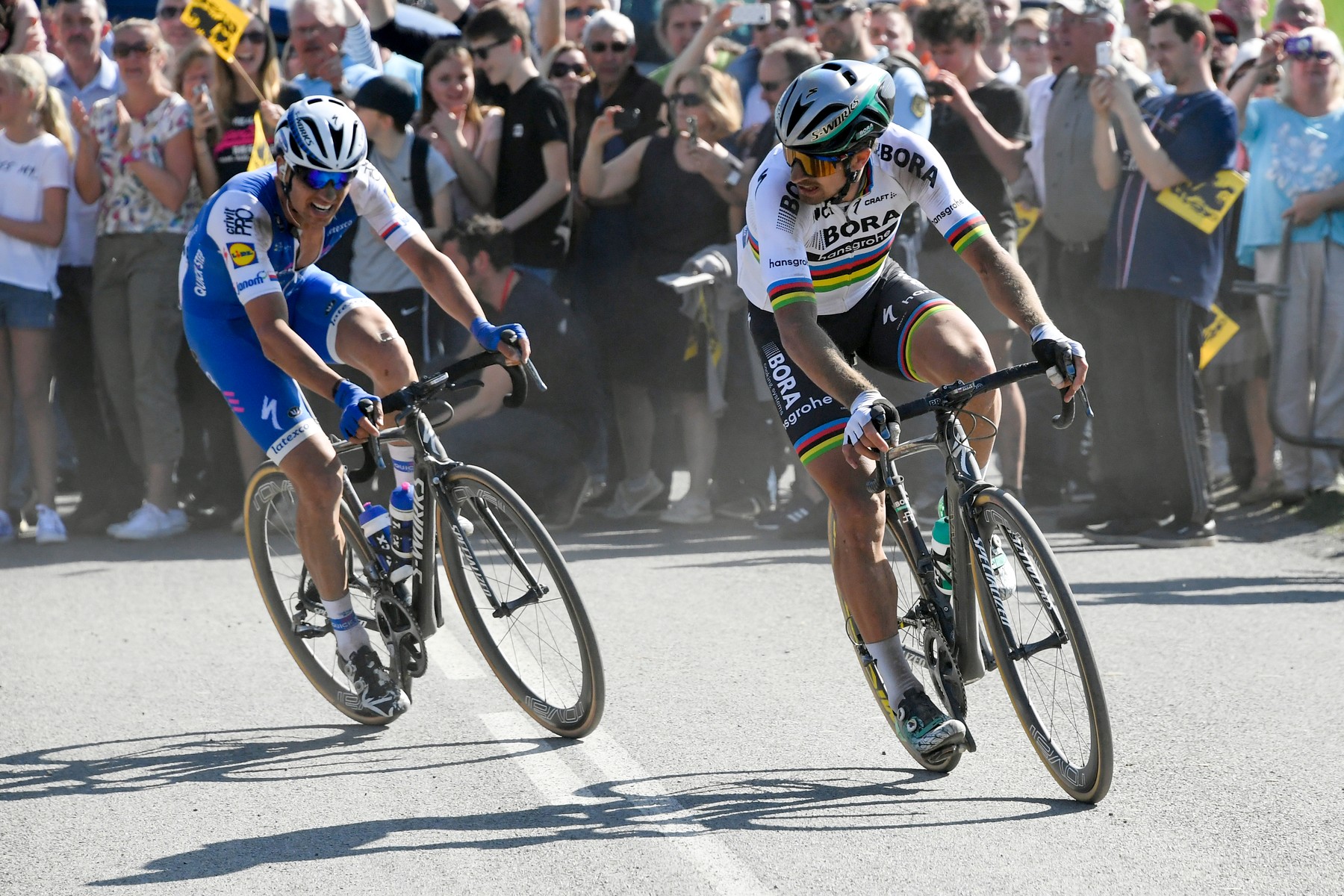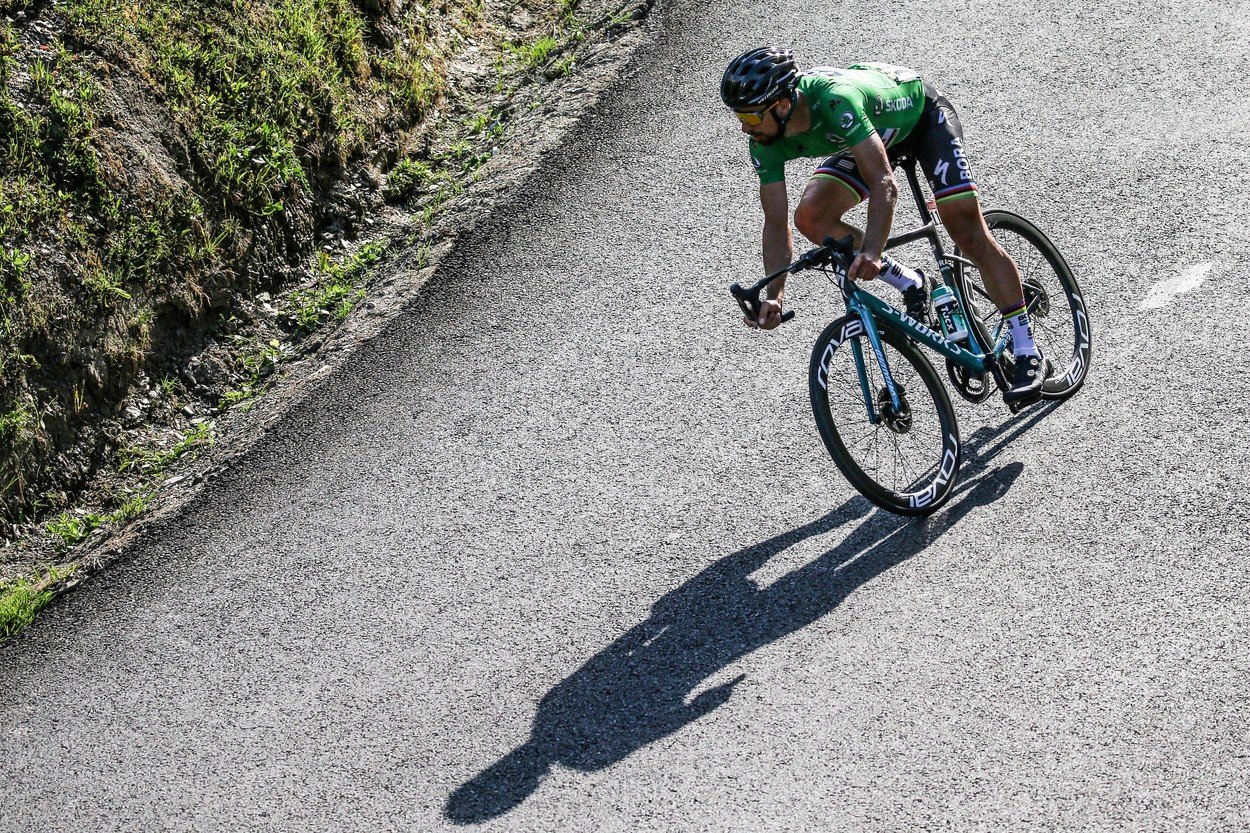He has won the Tour’s points classification title, or green jersey, six times as well as taking 11 stages at the world’s most prestigious road race. In addition, he won three consecutive world championships, four stages at the Vuelta, 11 stages and the overall classification at the Tour of California, 15 stages of the Tour de Suisse as well as winning the Paris-Roubaix and Tour of Flanders. All in all, he has won over 100 races as a professional. The 29-year-old Slovak must be doing something right.

Clearly, he’s got pure cycling talent and racing skills. But that is not enough to become a superlative world-class athlete. Not a pure sprinter, he nevertheless has won many sprints; and though he is not a threat in mountaintop finishes, he still does very well on climbs. There must be something in his training program that gives him an edge over others and makes him a rare cyclist who excels in all facets of the sport.
In the winter of 2017, the Cycling Weekly spent a week with Sagan as he resumed training with his coach, Paxti Vila, after his off-season holiday. The aim was to begin building a strength-and-conditioning base for the gruelling season to come.
The first day consisted of an easy two-hour morning ride, followed by a more intense, speed-focused gym session. According to Vila, who is sports director and coach for Sagan’s Bora-Hansgrohe team, the aim of the day was to make his muscle fibres work together. On Tuesday, the ride lasted three and a half hours and included four 10-minute reps at 85 % of his maximum aerobic threshold. Wednesday’s ride was four and half hours long and included taking two hills.

Sagan used Thursday to recover, with a training program much like that on Monday. The cycling became more intense on Friday. The three-and-a-half-hour ride comprised some 30 reps during which Sagan rode at 100 to 105% of his aerobic power over hills, to build up endurance. On Saturday he took the longest endurance ride of the week, of 4 to 5 hours, riding with friends and adding torque efforts of three minutes at 50-60 rpm alternating with two minutes at 90 rpm, to build strength and fitness. On Sunday, he rested, watching a movie, reading, and playing on Play Station.
Regarding his training schedule as the season approaches, Vila told Cycling Weekly: “Normally, from November 15 until the Tour Down Under is our base period, then after the Down Under we begin training blocks working on intensity and speed before the Classics. February is the biggest training month of the year for us, when weekly volume peaks at 32-35 hours, usually in the third week of February.”
Sagan’s training has some unique elements. For one, he has worked with specialists in Belgium to reduce the risk of injury and boost his core strength. This has increased his strength as well as his flexibility, as is illustrated by this well-known YouTube video of Sagan combining work on weights with core and flexibility exercises in the gym.
https://www.youtube.com/watch?v=E1Ubo0LWB7s
Most riders, and especially sprinters, often work in the gym to increase their strength in the off-season, but they rarely keep it up during the season, preferring to focus on road training. Sagan is different – as are all of Vila’s Bora-Hansgrohe riders – because his strength is important to his ability to sprint.
According to Vila, Sagan is not naturally fast. “We get his speed through his freshness and his strength,” he explained. “Getting to the finish fresh and being faster than the fast guys.”
However, this does not quite solve the mystery of Sagan’s ability to both climb and sprint so well. The two exercises require different muscle fibre types in the legs, slow twitch (type 1) and fast twitch (type 2). Marathon runners have mostly slow-twitch muscle fibres that tire slowly but do not generate much power, while the legs of sprinters consist mostly of fast-twitch fibres that tire rapidly but produce a great deal of force.

Sagan was world junior cross-country mountain-bike champion in 2008, just before he moved to road racing. Mountain bike racing requires both speed and the ability to climb moderate hills – and a different type of muscle fibre, 2a, which produces more power than type 1 and tires less rapidly than type 2. They help you when you sprint and power you when you climb. This is probably why Sagan excels at moderate climbs and often does not win sprints against the best pure sprinters.
In other words, a vital part of the training that differentiates Sagan from all other riders was accomplished before he turned to road racing. As a result, he will never win the overall classification in the Giro, Vuelta or Tour de France but because he climbs medium mountains very well and sprints very well he will almost certainly be a favourite to win the 2019 Tour points classification for a record seventh time and, depending on the course, a fourth world championship next year.
And Sagan is quite happy with it. As he explains in his memoir My World: “Every coach I’ve ever met asks me: ‘Do you want to be a better climber? A better sprinter? A better time-trialer?’ I say, why mess with nature? I am what I am. I go OK. If it’s not broken, don’t fix it. I believe that if you make a drastic change to improve one facet of your performance, there will be a price to pay elsewhere. Riders who have lost weight to climb better lose their kick. People who have improved their stamina become unable to sprint. Becoming more aerodynamic means losing power. The list is endless….”




